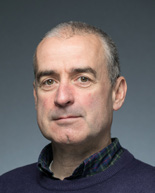The first Council of the new academic year continued to be dominated by issues related to Covid and its impact on education. It was the first meeting in the chair for new EIS President Heather Hughes, following her elevation to the post at the AGM in June. See feature on pp10-11 for a Q&A with the President.

Executive Committee & Covid Report
New Vice-President Andrene Bamford delivered her first report on behalf of Executive Committee, including an update on the future shape of EIS Council and Committee meetings. These will continue to be held on an online basis for the foreseeable future, but this will be kept under review. Executive is currently considering how best to return to face-to-face meetings in the future, including consideration of hybrid models for those who wish to continue to attend remotely.
Ms Bamford also outlined proposals to mark the 175th anniversary of the establishment of the EIS, highlighting that a working group was being established to take this work forward. See pp16-17 of this SEJ for more information.
Penny Gower (EIS-FELA) asked the Vice-President about EIS support for members wishing to travel to planned COP26 demonstrations in Glasgow, and if this support would offer flexibility as to how members choose to travel, safely, to attend the demos. Ms Bamford clarified that Executive had agreed funding support, and it would be for LAs and branches themselves to determine which methods of transport to deploy, based on their own needs
Covid Update
The Vice-President asked General Secretary Larry Flanagan, who represents the EIS on the Covid Education Recovery Group (CERG), to provide an update to Council.
The General Secretary said that there had been two meetings of CERG since the last meeting of the Executive Committee, and that the main concern that the EIS had been agitating on had been the change to the self-isolation protocols. The fact that pupils sitting next to someone in class are no longer considered “high-risk” close contacts, and are not required to self-isolate, was just one change that was causing confusion. Mr Flanagan said that some teachers had not learned of positive cases in their class until well after the fact, which was causing significant concern for members with vulnerabilities or living with a vulnerable family member.
“Variable use of ‘warn and inform’ letters in different authorities and in individual schools has also caused great confusion,” said Mr Flanagan. What has now been agreed is that ‘warn & inform’ letters will now go to close contacts of positive cases (not to everyone in the school, and not to only high risk close contacts). Following representations from the EIS, it will also be recommended that those in receipt of a ‘warn and inform’ letter should now take a lateral flow test before returning to school.
Mr Flanagan said that the latest Scottish Government figures indicate that around 94% of Scotland’s teachers are now double vaccinated. Despite this, he said, “we are still seeing the highest rates of positive tests amongst teachers that we ever have. Since schools returned in August, around 60% of all schools have had positive cases within the school.” Mr Flanagan also said that indications are that only around 30% of teachers are taking up the offer of twice-weekly lateral flow testing, and the EIS would encourage all members to take frequent tests to help prevent the spread of the virus. In addition to lateral flow testing, schools will also now be able to receive stock of PCR Covid test kits, said Mr Flanagan.
David Baxter (Dundee) said that he knew of many teachers who were doing lateral flow tests, but not recording the results. This was backed by Nicola Fisher (Glasgow) who said that the process for recording results via the Government website was putting many members off. Responding, Mr Flanagan acknowledged that this may indeed be an issue, but urged members to both take tests and register the results to help provide an accurate picture on the spread of the virus.
Sandie Gordon (Midlothian) asked if there was guidance on how many children in a class need to be off before a move to online learning can be made. “I know of a class where more than 50% of the pupils are off, and the teacher is trying to meet the needs of those in the class and those at home at the same time, which is completely unsustainable,” she said.
The General Secretary replied that there is currently no national agreement on what number constitutes a viable class, and the EIS was aware of the need to guard against teachers being expected to deliver in-class teaching and remote learning at the same time. “It remains an operational decision which would require local authority agreement before any decision to move a class to online learning is taken at school level,” said Mr Flanagan.
Education Committee
Convener Susan Quinn referenced many cross-cutting Covid issues that had already been covered in the Executive report, including concerns around ‘mission-creep’ related to digital learning and the need for continued emphasis that face-to-face learning, delivered by GTCS registered teachers, remained the best model for delivery of a quality education.

On Qualifications, Ms Quinn said that the EIS has been very clear that we cannot have a twin-track approach to next year’s qualifications, with staff and students being expected to gather additional evidence ‘just in case’ exams cannot go ahead next year. This clearly has massive workload implications for staff and students alike, she said.
Ms Quinn also referenced the announcement of the return of inspections by Education Scotland, announced just before Council met. Ms Quinn said that the EIS had issued a strongly worded response (see news item on p6) highlighting that a return to inspections is a retrograde step, which fails to take account of the current situation in schools.
Employment Relations Committee
On Benevolence issues, Convener David Baxter told Council that the Committee had welcomed donations from 5 Local Associations. The Committee met with representatives of Aberdeen Standard, who provided an update on how funds are performing and on issues related to our ethical investment policy. The committee agreed to increase the maximum grant from £2500 to £3000 for benevolent applications. 15 grants were approved by the Committee.

On Legal affairs, the Committee had considered 43 cases and were pleased to note that settlement figures of over £30k had been obtained on behalf of 5 members. The Committee had also had a lengthy discussion over what happens to EIS membership in the event that a member is convicted of a serious crime – the Committee agreed to memo Executive on consideration of this issue, said Mr Baxter.
Equality Committee
Convener Nicola Fisher, in reporting on the Equality Fringe at AGM, paid tribute to one of the speakers at the event, Emma Ritch, who sadly passed away over the summer. “Emma is a great loss to the Equality Sector and was also a great friend of the trade union movement,” said Ms Fisher.

Ms Fisher also reported on the recent EIS event to mark Pride month, which was very well received by members, and also offered valuable work to many performers who have not been able to do their normal amount of shows during the pandemic. Ms Fisher said that there had been a small amount of coordinated negative feedback around the event – largely from people who were not members, including some fundamentalist groups in the USA and certain media outlets in Russia.
Ms Fisher indicated that advice was to be prepared on the recent Scottish Government guidance on gender identity, which some members may have legitimate concerns about.
The distribution of EIS welcome packs for newcomers to Scotland is continuing, said Ms Fisher, and will take account of the needs of families coming to Scotland from Afghanistan.
On the campaign for universal free school meals – a long standing EIS policy – the institute is supporting the STUC campaign on this issue through staffing support and provision of resource materials, said Ms Fisher.
Salaries Committee
“On our pay claim, suffice to say, our patience is wearing thin,” said Convener Des Morris. He added, “We are expecting that any decision on an improved offer will now be taken at the next COSLA leaders meeting. If no improved offer is made by the next SNCT meeting at the end of September, we anticipate making a move to declare a dispute. Members will be kept updated on the outcome of these meetings.”

Mr Morris told Council that agreement had been reached via the SNCT on compensatory leave for those required to self-isolate during annual leave periods. We are, however, still seeking agreement on special leave arrangements for those absent on account of Covid, he said.
Mr Morris also highlighted the SNP Manifesto commitment to reduce class contact time, saying that it was essential to keep pressure on the Scottish Government, and not allow this commitment to slip.
Responding to a question from Susan Quinn (Glasgow) on funding for Lead Teacher posts, Mr Morris said that additional funding for lead teachers continued to be resisted by both COSLA and the Scottish Government, so no additional money has been offered. the Scottish Government argues that sufficient money has already been allocated to Councils, Councils take the opposite view, said Mr Morris.
